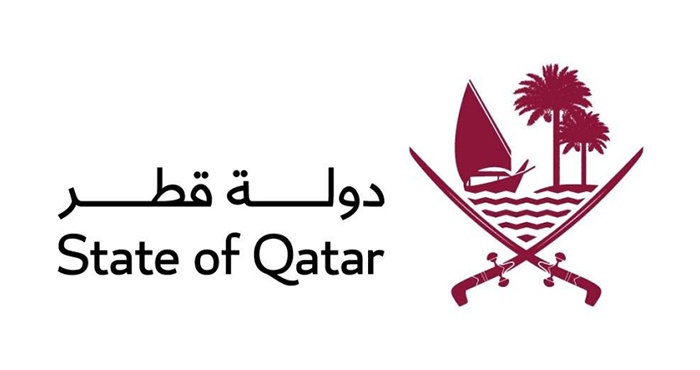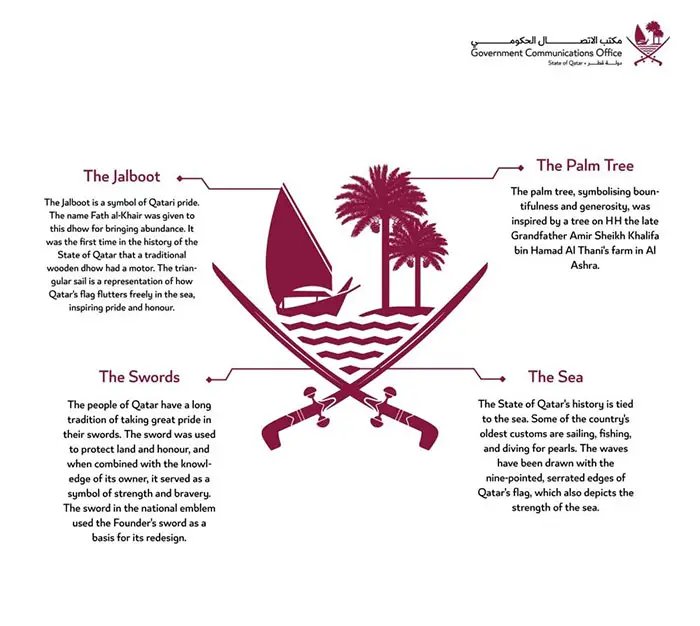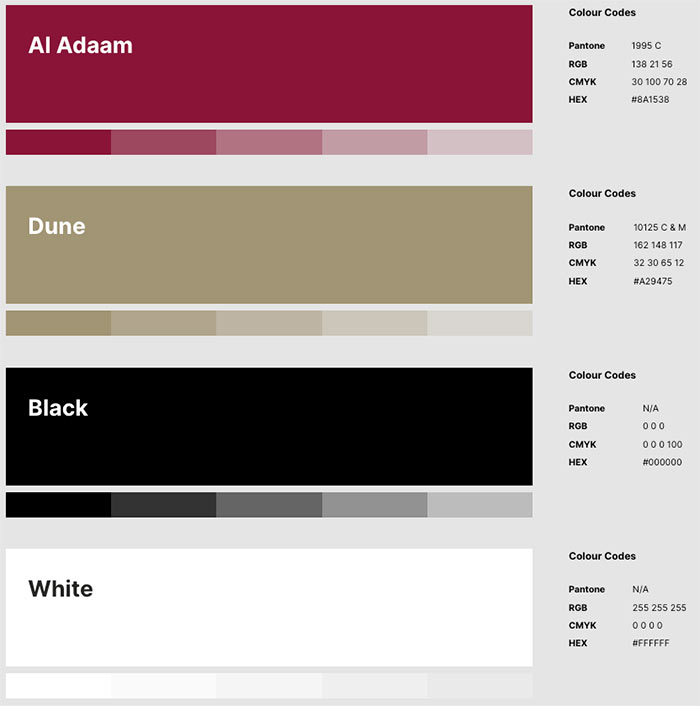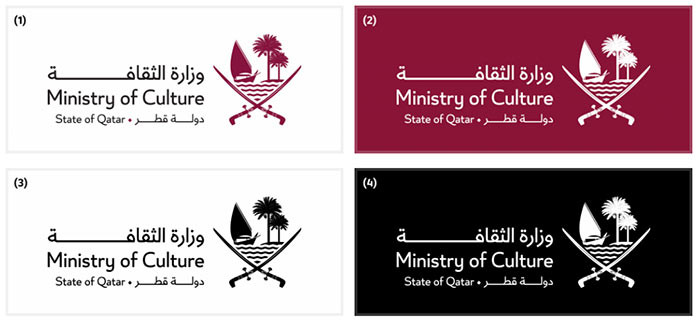A new national emblem of the State of Qatar was unveiled on 15 September 2022 by the Prime Minister and Minister of Interior, Sheikh Khalid bin Khalifa bin Abdul Aziz Al Thani.
To create a coherent identity, Qatar has upgraded its national emblem to symbolize the nation’s unity for future generations. Here is everything you need to know about the new Qatar National Emblem.
What is a National Emblem?
A national emblem is defined as an emblem, logo or seal reserved for use by a nation-state or multi-national state as a symbol of that nation. Most countries have a national emblem or a national coat of arms, which denotes an independent state in the form of a heraldic achievement.
Qatar’s National Coat of Arms
Qatar’s National Coat of Arms serves as the State emblem and its highest visual symbol. The National Coat of Arms is not only a reflection of Qatar’s unique history but also an expression of Qatar’s modernity and distinct identity.
With its maroon colour on a white background, the new Qatar National Emblem features four historical symbols: the founder’s sword, palm trees, the sea and the traditional boat.

By conveying the message that “we are one state and one government,” the new emblem evokes a sense of togetherness and inspires trust.
Evolution of New Qatar National Emblem
The Government Communications Office’s Twitter account published a video explaining how the Qatar National Emblem evolved from 1966 to the latest version.
Our past plays a critical part in shaping our present. The journey of the national emblem of the State of #Qatar is a testament to preserving our heritage, while looking into our future. #QatarNationalEmblem pic.twitter.com/smRPZUkypJ
— مكتب الاتصال الحكومي (@GCOQatar) September 15, 2022
“Our past contributes greatly to shaping our present. The journey of the national emblem of the State of Qatar is a testimony to the preservation of our heritage and an extended journey towards development and the future,” it stated.

The latest brand upgrade focused on three design principles:
- Cohesive
- Minimalist
- To the point
It is a minimalistic and modern approach to the earlier version, which has been used since 1976.
Qatar National Emblem Meaning
Each of the four elements in the new emblem represents a proud part of Qatar’s rich history and a nod to the future.

1. The Sword
Qataris have been known and associated with their pride in the sword since ancient times. As a symbol of courage and strength, the sword was passed down from generation to generation, used to defend land and honour, and combined with the wisdom of its owner.
The sword has been redesigned to be as close as possible to the original description of the Founder HH Sheikh Jassim bin Mohammed Al Thani’s sword.
2. The Palm
This palm tree represents the Qatari leadership’s interest in palm trees, symbolizing abundance and generosity, and is based on a tree on the farm of HH the late Grandfather Amir Sheikh Khalifa bin Hamad Al Thani in Al Ashra.
3. The Jalbout (Fath Al-Khair)
This dhow is called Fath al-Khair because it brings goodness. The vessel is the first traditional wooden, motor-powered ship in Qatar’s history. Originally built in 1900, the dhow was used primarily for pearl diving and trading trips as the property of Sheikh Hamad bin Abdullah Al Thani.
The triangular sail is distinguishable by its stripes. It symbolizes how Qatar’s flag flutters in the sea, inspiring pride, honour, and a sense of belonging.
4. The Sea
There is a strong connection between Qatari heritage and the sea. Traditional activities such as sailing, fishing, and pearl diving are among the country’s richest traditions. Qatar’s history recalls a time when these traditions also provided most of the country’s income.
Waves have been drawn using the nine-point serrated edges of Qatar’s flag, which also symbolise the sea’s strength. Three lines represent waves to symbolize Qatar’s three-sided encirclement by water.
Colours of Qatar National Emblem
This emblem uses the colour of the state flag of Qatar, Al Adaam (maroon), and the symbol of peace, white.

The primary colours in the brand are:
- Al Adaam represents the maroon colour of the flag,
- Dune represents Qatari Architecture,
- Black represents bakhoor, and
- White represents Qatar’s commitment to peace and prosperity,
Font of Qatar National Emblem
The Lusail font used in the new brand identity is distinguished by its historical significance, as it is derived from the original manuscripts written by the founder of Qatar, Shiekh Jassim bin Mohammed bin Thani. Similarly, the English font was influenced by Arabic calligraphy and hand movements.
Qatar’s new logo will be used regularly throughout all government agencies, enhancing Qatar’s image at home and abroad.

The State of Qatar has also unveiled a brand identity platform called Government Brand Assets. All ministries and government agencies will be able to manage all their brand-related assets through the new national emblem portal.
Restriction on Usage of New National Emblem
The Ministry of Commerce and Industry (MoCI) has banned the commercial use of Qatar’s official emblem.
In a statement, the ministry said it “underscored banning the use, sale or circulation of Qatar’s official emblem by commercial stores, as well as its commercial use on electronic platforms, in accordance with Law No. 9 of 2002 with respect to Trademarks, Trade Indications, Trade Names, Geographical Indications, and Industrial Designs and Templates”.
MoCI said it would intensify inspection campaigns and take the necessary legal measures against anyone who violates laws and enacts ministerial decisions.
Related Articles:
- Guide To Qatar’s New Currency Notes
- Souq Al Wakrah: Visitors Guide
- Things To Know About HIA’s Giant Teddy Bear
- Qatar ID Card: Everything You Need To Know
- Lusail Tram: Map, Timings and Ticket Prices
- Panda House Qatar: Location, Opening Hours and Tickets
Copyright © DohaGuides.com – Unauthorized reproduction of this article in any language is prohibited.
Information and images courtesy: Government Communications Office
